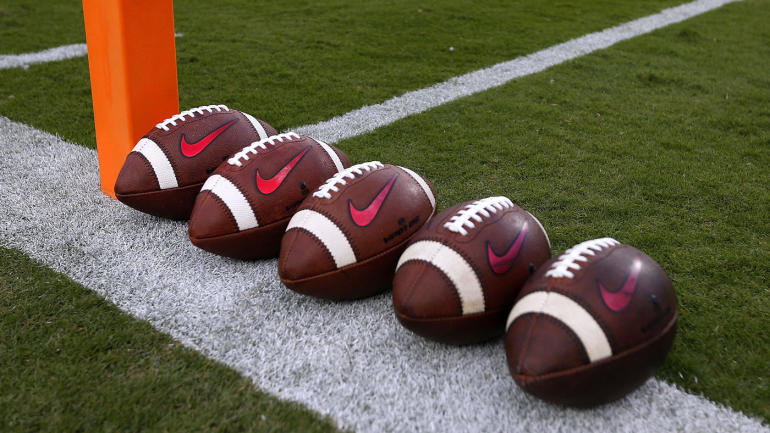
A working group that includes university presidents and sports executives has its eyes set on a college football "super league" that it believes can save college football. According to The Athletic, members of "College Sports Tomorrow" (CST) have devised a plan which includes promotion and relegation, a playoff with no selection committee and a system that will take the place of the NCAA and the College Football Playoff.
The CST structure, according to the report, is to have seven 10-team divisions consisting of the top 70 programs in the sport. An eighth division would also exist that would be made up of teams promoted from the second tier, which would consist of the remaining 50-plus FBS teams. The top 70 programs would never be at risk of being relegated, but there would be incentive for those teams in the second tier to win their way into contention for a title.
The playoff would be made up of the eight division winners plus eight wild cards, spots which would be decided similarly to the NFL using win-loss records and tiebreakers.
The 20-person group that's driving the CST pitch includes Syracuse chancellor Kent Syverud, West Virginia president Gordon Gee and Brian Rolapp, a top executive under Roger Goodell within the NFL's league office. According to the report, CST's lead organizer is Len Perna, whose experience with a top search firm has given him extensive connections throughout college sports.
Members of the group who spoke to The Athletic voiced their concern for the future of college sports as it pertains to the financial liability the NCAA could be facing as a result of pending litigation in the courts, as well as the opportunity to generate more revenue for schools than the existing system. That's where Rolapp's NFL experience was referenced; CST would attempt to create a bundled media rights deal similar to the NFL.
Other notable aspects to CST's pitch include:
- Universities would own a percentage of the league.
- Revenue distribution would not be an even split, with schools receiving more money for their brand value.
- One entity to negotiation with a players union on NIL, transfer portal and salary structure rules.
Outlook for CST
CST has not yet been embraced by some of the top commissioners and administrators in college sports, according to the report. Both SEC commissioner Greg Sankey and Big Ten commissioner Tony Pettiti yet to meet with the group, and there are reports of dinners that have been called off with various administrators from multiple power conferences. Meanwhile, those same commissioners and administrators have been working to secure a six-year extension to the College Football Playoff's media rights deal, which now runs through the 2031-32 season.
CST's plans to step in not just for the NCAA and College Football Playoff but the conferences themselves creates an issue if the group is planning to put its system in place anytime soon. The Big Ten, SEC, Big 12 and ACC all have their media rights tied up through at least 2030, and any attempt to shake up the system in the midst of these contracts includes significant legal and financial ramifications. If CST is in the "no bad ideas" stage of development, then it has created a structure that hits on several points that college football fans have discussed throughout the recent and tumultuous round of conference realignment.
Myriad issues are left to be resolved before CST successfully emerges as a replacement for the current system, the most notable of which is conferences that are bound to both the College Football Playoff and their media rights partners through the end of the decade.
















